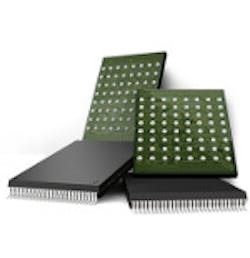Phase change memory promises to provide non-volatility with high performance and capacity. It is available from Micron and is already used in a number of niche markets. I spoke with Ed Doller, Vice President and Chief Memory Systems Architect, about the technology and Micron's offerings.
Wong: 128Mbit parts are shipping in parallel and serial versions. What is the next step for this year?
Doller: There's still a lot of opportunity with our current parallel and serial versions, and our focus remains on working with our customers to integrate our production PCM into their applications. Because it is a new technology there is a lot of education that still needs to be done on our part. We will announce higher capacities as the technology matures, but as I mentioned earlier we don't have anything new to announce at this time.
Wong: How does PCM compare with flash and DRAM now and in the near future?
Doller: Each technology has specific strengths and weaknesses enabling entry into differing markets. While there is still plenty of life left in both DRAM and NAND, Micron believes PCM to play a pivotal role in the memory hierarchy, and we are actively executing on this technology. We first expect PCM to potentially displace some applications that use NOR flash memory given its ability to have a long-term scaling path. And with its non-volatile RAM-like characteristics, we also see PCM being used in place of certain applications that use a DRAM/NOR combination. PCM is also showing promise as an alternative to lower-density NAND products, as well as complementing system memory (DRAM) in computing applications.
Wong: What application areas is PCM being used on now?
Doller: Low-density PCM is largely used today in embedded applications as a NOR replacement with features currently unavailable to designers with NOR such as bit alterability. There are several other usages being explored with our key customers. The reality is with new technologies this type of work takes time as there typically aren't customers designing applications that can't be met with the current memory technologies available today.
Wong: What application areas will PCM be used for in the future?
Doller: PCM will play a pivotal role in the broader memory hierarchy in the future. Specifically, we believe PCM has the capability to change the memory hierarchy in computing. Our team is currently working closely with key OEM's and ISV's with proof-of-concept prototypes to show the value PCM has to offer. It's important to note that changes such as these take extensive research and have long gestation periods. With that said, we don't expect PCM to completely displace NAND or DRAM in these application areas, but it plays more of a complementary role.
Wong: How robust is the technology? Will it be suitable for automotive and military applications?
Doller: As with all the markets we service, it's important to understand their specific usage conditions. Because PCM uses heat to change the phase (state) of the information it stores, there is a strong thermal dependence on the technologies ability to maintain its data - something known as data retention. We have a very good understanding of this relationship (temperature vs. time) and have had numerous discussions with customers in both of these markets to determine, under their specific usage condition, if the technology was capable or not of meeting their needs. In short, it depends.
Wong: Is PCM a niche market now?
Doller: Yes, the applications for which PCM is used today are relatively niche. Mainstream memory technology - NAND, DRAM and NOR - continue to work well in the applications for which they are used.
Wong: How is PCM going to take on flash and DRAM in the future (ex. DRAM DIMM form factors)?
Doller: We believe that PCM will be a complementary technology to NAND, NOR and DRAM for the foreseeable future. Should scaling of our current technologies fail to deliver on one or more attributes important to a specific use condition, PCM may be in a position to deliver customers either lower system cost or higher system performance. Until that point, we view PCM as a complementary technology to be used alongside or in combination with other memory technologies.
